6 Brands Crushing It Using Augmented Reality to Enhance the Shopping Experience
Life as we know it is changing, and a big part of that change comes from technology. One such advancement that is rapidly reshaping our everyday experiences is 3D Augmented Reality (3D AR). Nowhere is this more prevalent than in the realm of shopping.
Defining 3D AR
To put it simply, 3D AR involves superimposing computer-generated images onto our real-world view. This creates an immersive, interactive experience that bridges the gap between the digital and physical worlds. But how does this relate to shopping? Let's delve in!
The Benefits of 3D AR in Shopping Experience
With 3D AR, you can visualize products in your own space before purchasing them. You can see how that IKEA couch looks in your living room, or how that new lipstick shade looks on you without even leaving your house. This enriched shopping experience not only saves time but also reduces the chances of post-purchase dissonance. It's an exhilarating new chapter in retail, and here are some trailblazing apps leading the way.
Top 3D AR Shopping Apps
1. IKEA Place
Features
IKEA Place is a prime example of a 3D AR shopping app. This cutting-edge tool allows you to virtually 'place' IKEA products in your space. It boasts a high degree of accuracy and a wide range of available items.
Benefits
What's more, IKEA Place can boost confidence in your purchases by allowing you to visualize them in your environment. This not only enhances your shopping experience but also helps you make more informed decisions.
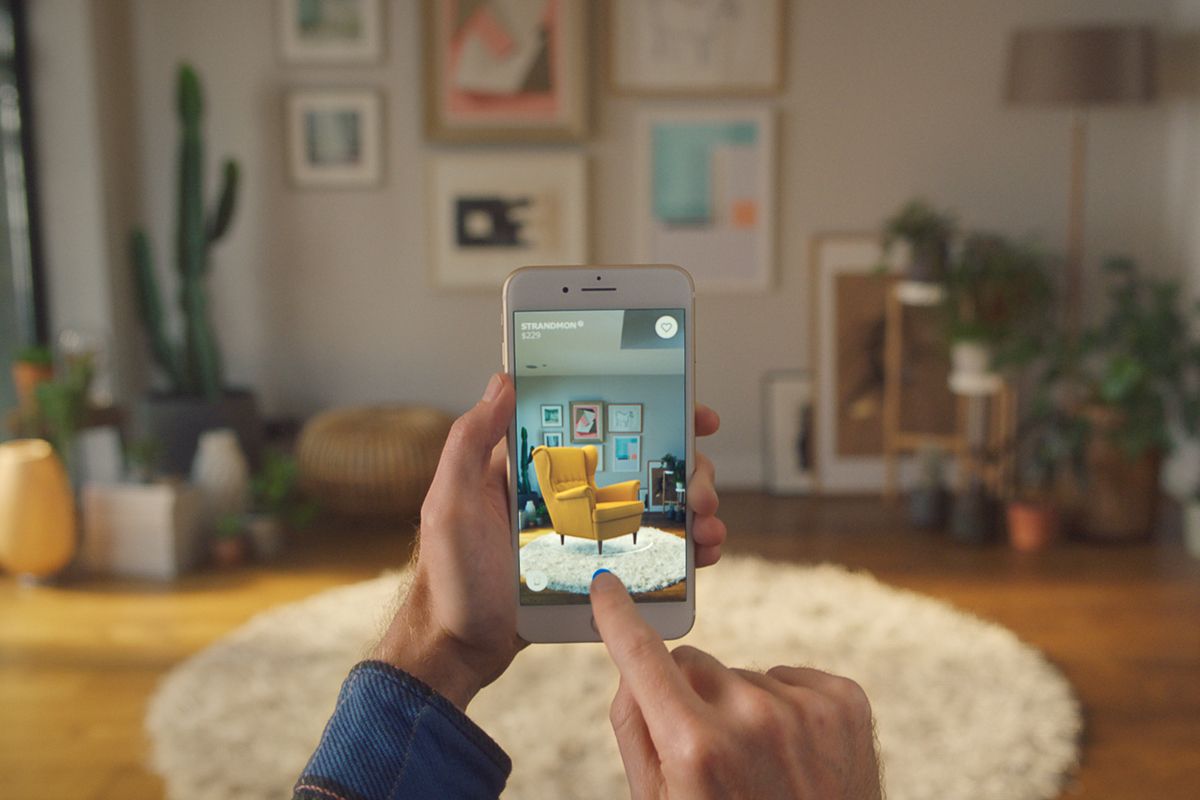
2. Porsche AR
Features
The Porsche AR app enables you to experience your dream Porsche configuration anytime, anywhere. With this app, you can:
- Place your personally configured Porsche model in your living room or in front of your garage.
- Use your individual Porsche code to retrieve your online configured cars.
- Explore hidden features in X-Ray mode.
- Enjoy the interactive driving mode with the Porsche of your choice.
- Scan your personal Porsche to see new colors and wheels.
Benefits
By letting you explore and interact with your customized Porsche in a virtual environment, this app elevates the car shopping experience to a whole new level.
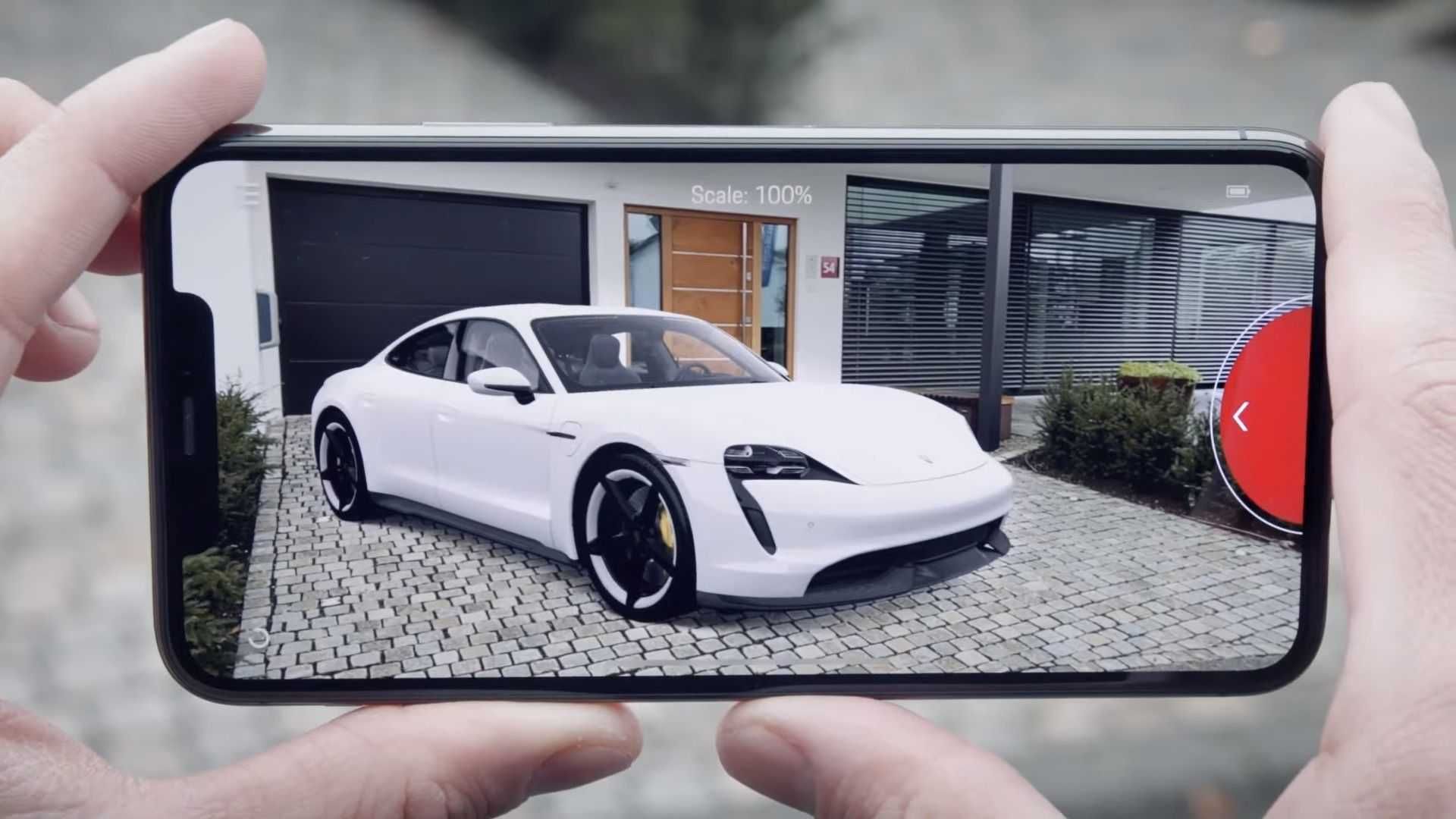
3. Sephora Virtual Artist
Features
Sephora Virtual Artist lets you try on different makeup products virtually. It even allows you to compare different shades side by side on your own face!
Benefits
Not only can this save you from potential makeup mishaps, but it also brings a new level of fun and personalization to your beauty shopping experience.
Sephora Virtual Makeup Try-On Video
4. Target's "See It in Your Space"
Features
Target offers a unique functionality within its app that lets customers digitally see products in their homes. Dubbed "See It in Your Space," this feature lets you visualize furniture items in a 3D view within your own home. You can simply type "See It in Your Space" in the search bar of Target’s app to access products available in augmented reality.
Benefits
By allowing customers to see what furniture items will look like within their own homes, Target provides a more
immersive and confidence-boosting shopping experience.
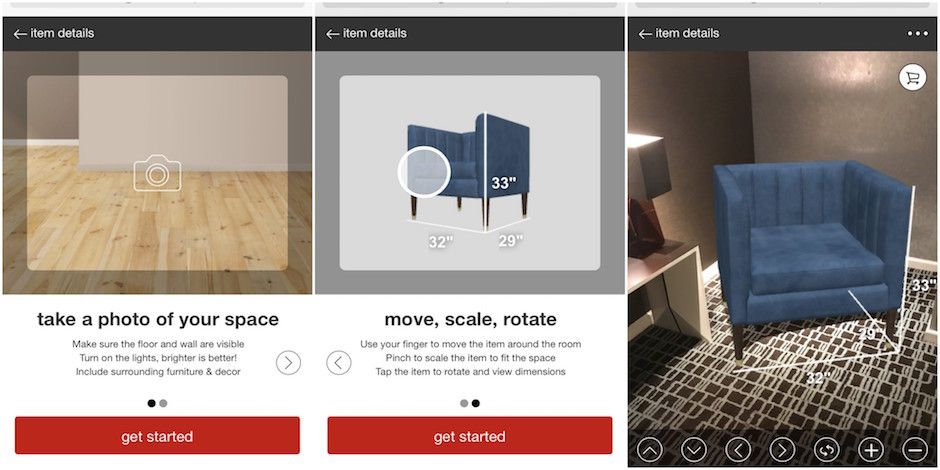
5. Amazon Beauty AR
Features
Amazon has collaborated with L’Oreal to bring augmented reality to its beauty shoppers. The feature, accessible through Amazon’s shopping app, allows customers to virtually try on various shades of lipstick. Customers can either take a photo of themselves or upload a picture and select from a range of lipstick colors to try on. Alternatively, you can select a model with a similar skin tone to yours and see what the makeup looks like on her.
Benefits
Amazon's AR Beauty feature enables customers to make more informed choices about the beauty products they purchase, offering a fun and engaging shopping experience.
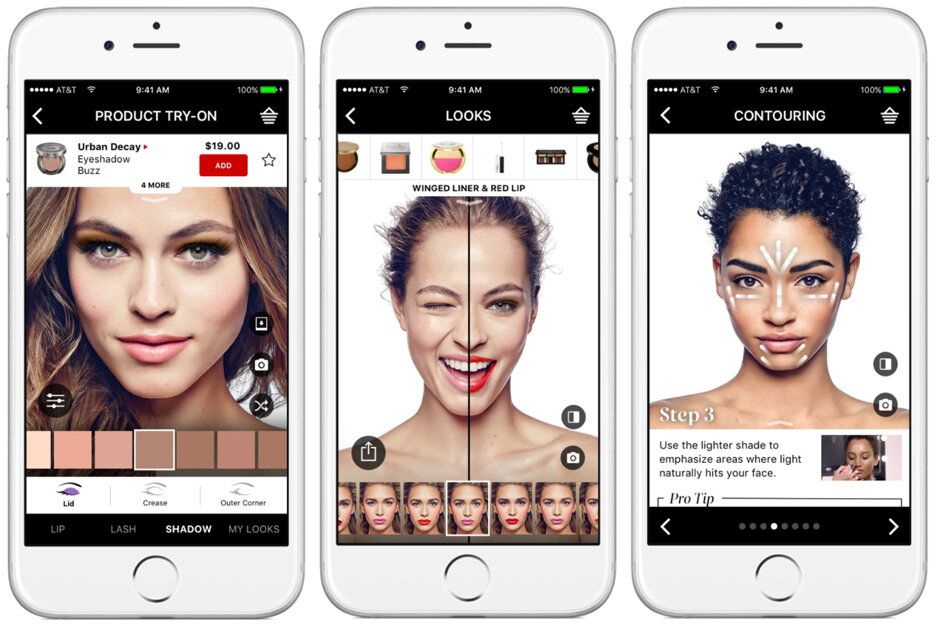
6. Home Depot AR
Features
The Home Depot AR capabilities were rolled out in its app and mobile web platform just before the pandemic. The AR feature, which was developed in-house, is available on the product detail page where consumers can tap “See it in your home with 3D Augmented Reality” to activate the AR viewer.
Benefits
Home Depot AR has become a lifesaver for home improvement enthusiasts, enabling them to view the size, color, and texture of items in their own home before making a purchase. This feature has undoubtedly boosted both engagement and conversion rates for Home Depot.
Now, we've explored some top examples of 3D AR shopping apps. But how do you decide which one is right for you?
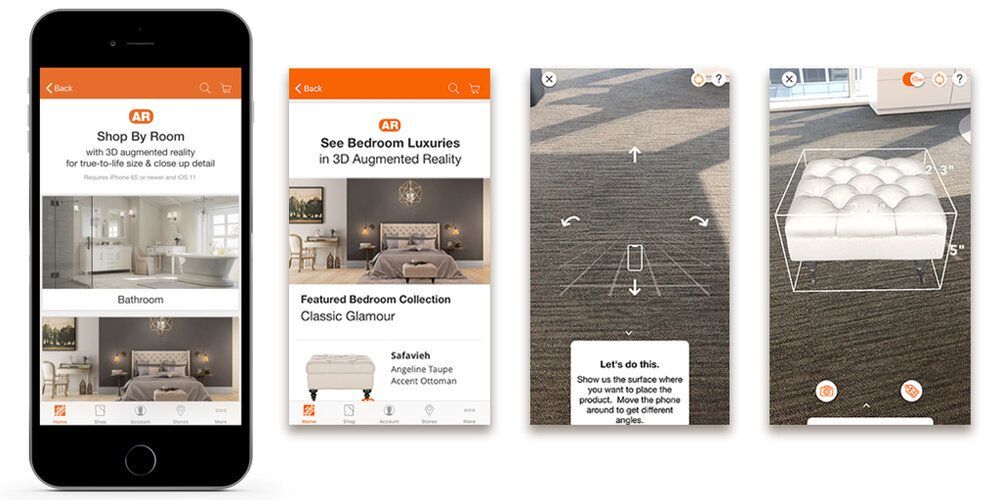
How to Choose the Right 3D AR Shopping App
Choosing the right 3D AR app is a combination of a few key factors: user experience, quality of the 3D AR, and compatibility with your device. Remember, an app that provides a seamless and intuitive user experience, high-quality 3D visuals, and compatibility with your device is likely to offer you the best shopping experience.
The Future of 3D AR
3D AR is more than just a trend - it's the future of shopping. As technology continues to evolve, we can only expect these shopping experiences to become even more immersive and personalized.
Conclusion
To sum up, 3D AR has revolutionized the shopping experience, making it more immersive, personalized, and enjoyable. IKEA Place, Target's "See It in Your Space," Sephora Virtual Artist, Amazon's AR Beauty, Porsche AR, and Home Depot AR are leading the way in this new era of shopping. These tools are transforming how we shop, bringing a wealth of benefits to both consumers and retailers.
FAQs
- What additional features do Target's "See It in Your Space" and Amazon Beauty AR offer? Target's AR feature allows customers to visualize furniture in their own home before making a purchase. Amazon's AR Beauty lets customers virtually try on various shades of lipstick, offering a fun and engaging way to shop for beauty products.
- Why are Target's "See It in Your Space" and Amazon Beauty AR important for shopping? These AR features enhance the shopping experience by allowing customers to visualize and interact with products in their own environment. This can lead to more confident purchasing decisions.
- How to choose the right 3D AR shopping app? Consider factors such as user experience, quality of the 3D AR, and compatibility with your device.
- What is the future of 3D AR in shopping? 3D AR is expected to provide increasingly immersive, personalized, and enriched shopping experiences as the technology evolves.
- Are these 3D AR apps available on all devices? While most apps aim to be widely compatible, it's always best to check the specific requirements for each app to ensure it works with your device.
TALK TO A PRO
We're here to bring your brand to life!
Stay Connected with BrandXR
Create Augmented Reality for Free!
Create, Publish, and Measure 3D Augmented Reality Experiences Without Having to Code.














